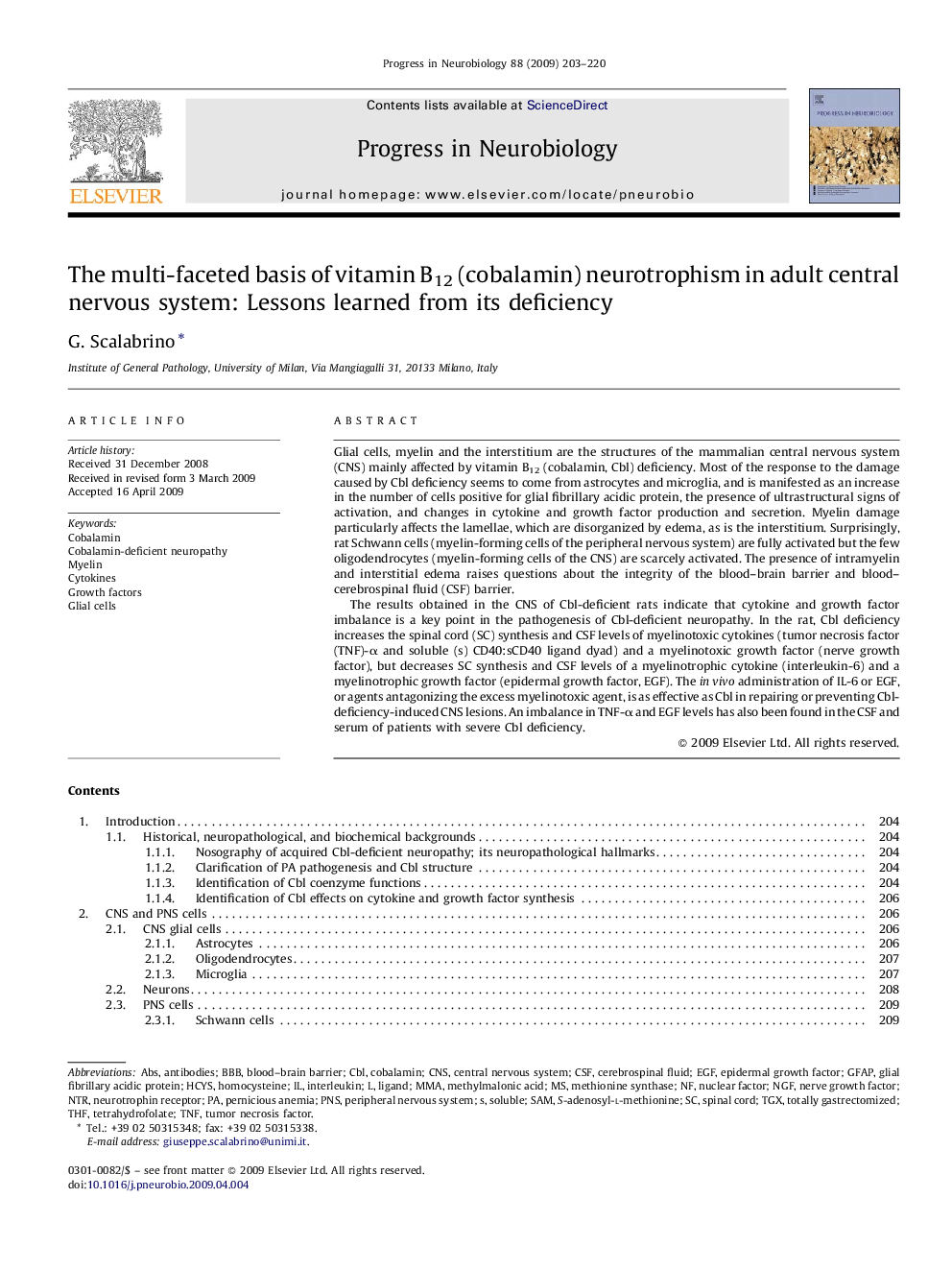| Article ID | Journal | Published Year | Pages | File Type |
|---|---|---|---|---|
| 4353714 | Progress in Neurobiology | 2009 | 18 Pages |
Glial cells, myelin and the interstitium are the structures of the mammalian central nervous system (CNS) mainly affected by vitamin B12 (cobalamin, Cbl) deficiency. Most of the response to the damage caused by Cbl deficiency seems to come from astrocytes and microglia, and is manifested as an increase in the number of cells positive for glial fibrillary acidic protein, the presence of ultrastructural signs of activation, and changes in cytokine and growth factor production and secretion. Myelin damage particularly affects the lamellae, which are disorganized by edema, as is the interstitium. Surprisingly, rat Schwann cells (myelin-forming cells of the peripheral nervous system) are fully activated but the few oligodendrocytes (myelin-forming cells of the CNS) are scarcely activated. The presence of intramyelin and interstitial edema raises questions about the integrity of the blood–brain barrier and blood–cerebrospinal fluid (CSF) barrier.The results obtained in the CNS of Cbl-deficient rats indicate that cytokine and growth factor imbalance is a key point in the pathogenesis of Cbl-deficient neuropathy. In the rat, Cbl deficiency increases the spinal cord (SC) synthesis and CSF levels of myelinotoxic cytokines (tumor necrosis factor (TNF)-α and soluble (s) CD40:sCD40 ligand dyad) and a myelinotoxic growth factor (nerve growth factor), but decreases SC synthesis and CSF levels of a myelinotrophic cytokine (interleukin-6) and a myelinotrophic growth factor (epidermal growth factor, EGF). The in vivo administration of IL-6 or EGF, or agents antagonizing the excess myelinotoxic agent, is as effective as Cbl in repairing or preventing Cbl-deficiency-induced CNS lesions. An imbalance in TNF-α and EGF levels has also been found in the CSF and serum of patients with severe Cbl deficiency.
